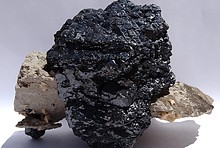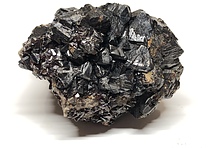Home PageAbout MindatThe Mindat ManualHistory of MindatCopyright StatusWho We AreContact UsAdvertise on Mindat
Donate to MindatCorporate SponsorshipSponsor a PageSponsored PagesMindat AdvertisersAdvertise on Mindat
Learning CenterWhat is a mineral?The most common minerals on earthInformation for EducatorsMindat ArticlesThe ElementsThe Rock H. Currier Digital LibraryGeologic Time
Minerals by PropertiesMinerals by ChemistryAdvanced Locality SearchRandom MineralRandom LocalitySearch by minIDLocalities Near MeSearch ArticlesSearch GlossaryMore Search Options
The Mindat ManualAdd a New PhotoRate PhotosLocality Edit ReportCoordinate Completion ReportAdd Glossary Item
Mining CompaniesStatisticsUsersMineral MuseumsClubs & OrganizationsMineral Shows & EventsThe Mindat DirectoryDevice SettingsThe Mineral Quiz
Photo SearchPhoto GalleriesSearch by ColorNew Photos TodayNew Photos YesterdayMembers' Photo GalleriesPast Photo of the Day GalleryPhotography
╳Discussions
💬 Home🔎 Search📅 LatestGroups
EducationOpen discussion area.Fakes & FraudsOpen discussion area.Field CollectingOpen discussion area.FossilsOpen discussion area.Gems and GemologyOpen discussion area.GeneralOpen discussion area.How to ContributeOpen discussion area.Identity HelpOpen discussion area.Improving Mindat.orgOpen discussion area.LocalitiesOpen discussion area.Lost and Stolen SpecimensOpen discussion area.MarketplaceOpen discussion area.MeteoritesOpen discussion area.Mindat ProductsOpen discussion area.Mineral ExchangesOpen discussion area.Mineral PhotographyOpen discussion area.Mineral ShowsOpen discussion area.Mineralogical ClassificationOpen discussion area.Mineralogy CourseOpen discussion area.MineralsOpen discussion area.Minerals and MuseumsOpen discussion area.PhotosOpen discussion area.Techniques for CollectorsOpen discussion area.The Rock H. Currier Digital LibraryOpen discussion area.UV MineralsOpen discussion area.Recent Images in Discussions
Techniques for Collectorsdissolving rhodochrosite

14th May 2007 07:38 UTCAlbert Russ Expert

14th May 2007 10:28 UTCKarel Bal
Rhodochrosite is dissolvable in warm HCL.
Kindest regards.

18th May 2007 13:19 UTCAnonymous User
I recomment removing them mechanically,finding the limits of the brocken crystals and breaking them just where the contct is.HCL may destroy the rest of the crystals!Polishing the side crystals would give a pleasant look to the specimen as well,no need to remove them!
Hope I helped!
-Kostas.
19th May 2007 05:33 UTCDon Saathoff Expert
8th Jun 2007 11:41 UTCRock Currier Expert
Try mechanical means rather than chemical. Rhodochrosites and siderites are both carbonates but you will play merry hell trying to use acids to dissolve any quantity of them. If you take rhodochrosite and siderite and grind them to a fine powder and put a drop of a hot strong acid on them, you will get some bubbles, but not anything like the fizzing you will get if you put a drop of those acids on calcite. I had a nice specimen with siderite? growing on cassiterite and quartz from Bolivia. I finally did manage to dissolve the siderite but had to use almost boiling acid over an extended period of time to do it. The first big and fine rhodochrosite that came out of Peru from Pasto Bueno was sold to Gary Nagen by a young mine geologist for less than $50. He told me that he knew it was not rhodochrosite because he put a drop of hydrochloric acid on it and it did not bubble. I had not the heart to tell him that it really was rhodochrosite and that Gary sold it for more than he was likely to make in his life time.
Rock

20th Sep 2007 19:44 UTCKevin Xu
20th Sep 2007 21:04 UTCPaul L. Boyer

20th Sep 2007 22:03 UTCKevin Xu
20th Sep 2007 22:24 UTCPaul L. Boyer

20th Sep 2007 22:28 UTCKevin Xu
20th Sep 2007 23:59 UTCPaul L. Boyer
21st Sep 2007 11:06 UTCPeter Haas
In the strict sense, "hydrochloric acid" refers to pure HCl (a gas), and "muriatic acid" to its aqueous solution.

21st Sep 2007 14:32 UTCDonald Vaughn
21st Sep 2007 15:40 UTCChristian Bracke Expert
Christian
21st Sep 2007 16:00 UTCSteve Hardinger 🌟 Expert
Pure, anhydrous (no water) HCl (not HCL) is a gas, correctly named "hydrogen chloride." Hydrogen chloride has a hydrogen atom, and therefore can be an acid. A substance does not have to be dissolved in water (or any other solvent) to have acidic proerties. When hydrogen chloride is dissolved in water, the resulting solution consists of water, hydronium ion (H3O+) and chloride ion (Cl-). No significant amount of HCl remains. This water solution of hydrogen chloride is called "hydrochloric acid". Industrial-grade hydrochloric acid is called "muriatic acid". Muriatic acid is often yellow due to impurities. For mineral cleaning purposes, muriatic acid and hydrochloric acid can be used interchangably, although the former is usually much less expensive.
Quiz tomorrow. Class dismissed.
Steve Hardinger
Professor of Chemistry, UCLA




Mindat.org is an outreach project of the Hudson Institute of Mineralogy, a 501(c)(3) not-for-profit organization.
Copyright © mindat.org and the Hudson Institute of Mineralogy 1993-2024, except where stated. Most political location boundaries are © OpenStreetMap contributors. Mindat.org relies on the contributions of thousands of members and supporters. Founded in 2000 by Jolyon Ralph.
Privacy Policy - Terms & Conditions - Contact Us / DMCA issues - Report a bug/vulnerability Current server date and time: May 13, 2024 15:22:29
Copyright © mindat.org and the Hudson Institute of Mineralogy 1993-2024, except where stated. Most political location boundaries are © OpenStreetMap contributors. Mindat.org relies on the contributions of thousands of members and supporters. Founded in 2000 by Jolyon Ralph.
Privacy Policy - Terms & Conditions - Contact Us / DMCA issues - Report a bug/vulnerability Current server date and time: May 13, 2024 15:22:29










